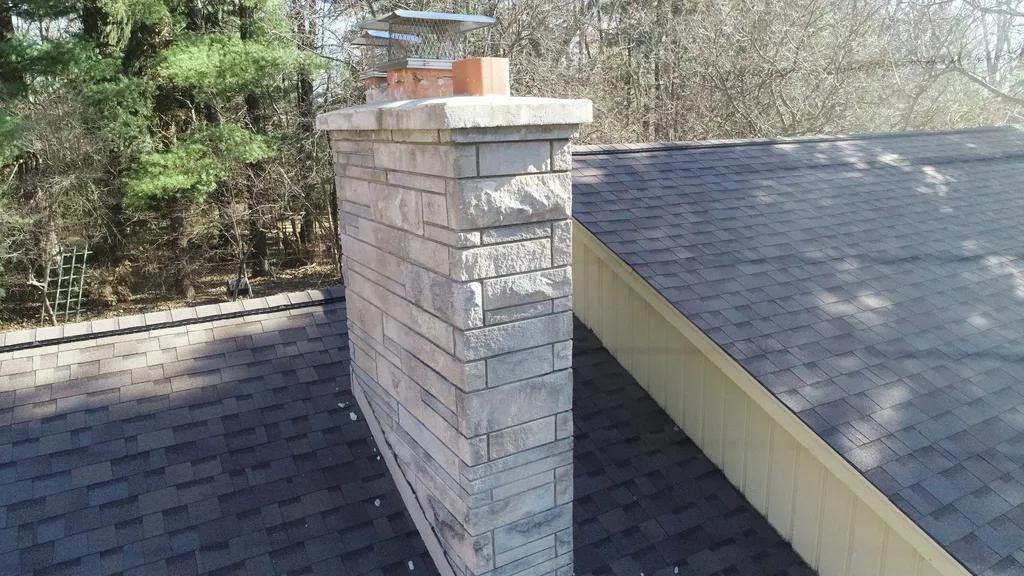Chimneys can be a beautiful and functional addition to any home, but they can also be a source of frustration when leaks occur during heavy rain. In this article, we will explore common causes of chimney leaks in heavy rain and provide practical troubleshooting tips to help homeowners identify and address the source of the problem. Understanding the potential issues that can lead to chimney leaks can help prevent costly damage and ensure your chimney remains a reliable and safe feature of your home.
Table of Contents
- Common Causes of Chimney Leaks
- Examining Flashing and Sealant Issues
- Identifying and Repairing Chimney Cap Problems
- Preventative Maintenance to Avoid Future Leaks
- Q&A
- The Way Forward

Common Causes of Chimney Leaks
Chimney leaks can be a common issue, especially during heavy rainstorms. It’s essential to identify the root cause of the leak to prevent further damage to your home. Here are some that you should troubleshoot:
- Cracked Chimney Crown: The chimney crown is the concrete slab at the top of the chimney. If it is cracked or damaged, water can seep through and cause leaks.
- Missing or Damaged Flashing: Flashing is the sheet metal installed to prevent water from entering the chimney where it meets the roof. If it is missing or damaged, water can penetrate the chimney.
- Cracked Chimney Bricks: Over time, bricks can deteriorate and crack, allowing water to enter the chimney structure.
- Faulty Chimney Cap: A chimney cap is designed to prevent water from entering the flue. If it is damaged or missing, water can easily enter the chimney.

Examining Flashing and Sealant Issues
In heavy rain, chimney leaks can become a common issue for homeowners. One of the main culprits of these leaks is often due to flashing and sealant problems. It is crucial to examine these components thoroughly to identify and resolve any issues that may be causing water infiltration.
When troubleshooting chimney leaks, pay close attention to the condition of the flashing around the base of the chimney. Look for signs of rust, corrosion, or gaps in the flashing that may be allowing water to seep in. Additionally, check the sealant used to seal the flashing and joints. Over time, sealant can deteriorate, leading to leaks. Make sure to inspect and replace any deteriorated sealant to prevent further water damage.

Identifying and Repairing Chimney Cap Problems
During heavy rainstorms, it is common for homeowners to experience leaks in their chimneys. One of the main culprits of chimney leaks is a damaged or improperly installed chimney cap. Chimney caps play a crucial role in protecting your chimney from water damage, animal intrusion, and debris buildup. is essential in preventing leaks and maintaining the structural integrity of your chimney.
If you suspect that your chimney cap is the source of a leak, here are some common issues to look out for:
- Rust: Check for signs of rust on the chimney cap, as rust can cause holes and allow water to enter the chimney.
- Cracks: Inspect the chimney cap for any cracks or damage that could be letting water seep through.
- Misalignment: Ensure that the chimney cap is properly aligned and securely attached to the chimney structure.

Preventative Maintenance to Avoid Future Leaks
Regular preventative maintenance is essential to avoid costly future leaks in your chimney. By taking proactive steps, you can identify and address potential issues before they turn into major problems during heavy rain.
- Inspect the chimney flashing for any signs of damage or deterioration.
- Clean out the gutters and downspouts to ensure proper drainage away from the chimney.
- Check the chimney crown for cracks and repair if necessary.
- Have a professional chimney sweep clean and inspect the flue annually.
By following these preventative maintenance steps, you can protect your chimney from leaks and avoid costly repairs down the road. Remember, a little maintenance now can save you a lot of headaches later on.
Q&A
Q: Why does my chimney leak during heavy rain?
A: Chimney leaks during heavy rain can be caused by various factors such as cracked brickwork, damaged flashing, deteriorated mortar joints, or a faulty chimney cap.
Q: How can I identify where the leak is coming from?
A: To identify where the leak is coming from, start by inspecting the chimney from both inside and outside the house. Look for water stains, damp spots, or peeling paint on the ceiling and walls near the chimney.
Q: What are some common solutions to chimney leaks during heavy rain?
A: Common solutions to chimney leaks include repairing or replacing damaged flashing, resealing mortar joints, installing a new chimney cap, and waterproofing the chimney.
Q: Should I attempt to repair the chimney leak myself or hire a professional?
A: It is recommended to hire a professional chimney sweep or contractor to properly diagnose and repair chimney leaks, as they have the expertise and tools necessary to ensure the issue is resolved effectively.
Q: How can I prevent chimney leaks in the future?
A: To prevent chimney leaks in the future, regularly inspect and maintain your chimney, ensure flashing and chimney caps are in good condition, and consider waterproofing the chimney to protect it from water damage.
The Way Forward
In conclusion, identifying and fixing chimney leaks during heavy rain can save you from costly repairs and potential damage to your home. By following the steps outlined in this article, you can effectively troubleshoot and resolve any issues with your chimney. Remember, regular maintenance and proper installation are key to ensuring your chimney remains water-tight and functioning properly. If you encounter persistent leaks or suspect deeper issues with your chimney, it is always best to consult with a professional chimney repair technician. Thank you for reading and stay dry!


